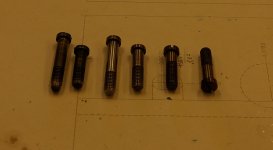tbonesmith
Plastic
- Joined
- Dec 9, 2008
- Location
- Sydney NSW Australia
Hi Guys,
I am coming to the end of a mauser 98 sporter build. I need to make a couple of new screws for the action/trigger guard without the keeper screw recesses. In the past when I have made screws for such purposes I havn't bothered to harden them, but is it better practice to harden lathe turned screws?
Cheers
I am coming to the end of a mauser 98 sporter build. I need to make a couple of new screws for the action/trigger guard without the keeper screw recesses. In the past when I have made screws for such purposes I havn't bothered to harden them, but is it better practice to harden lathe turned screws?
Cheers


